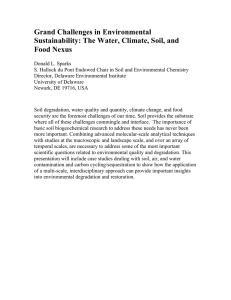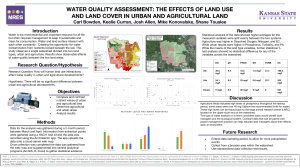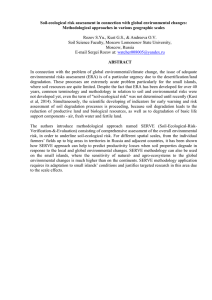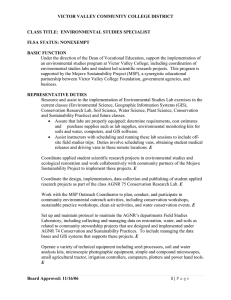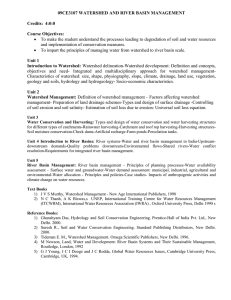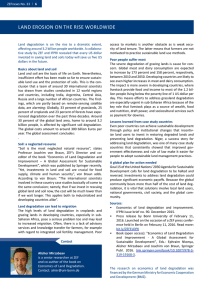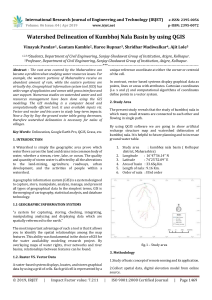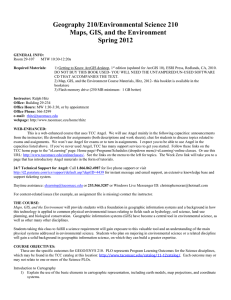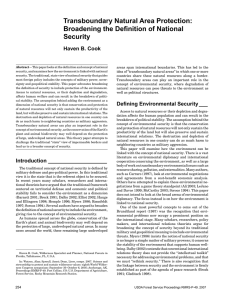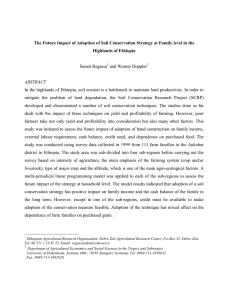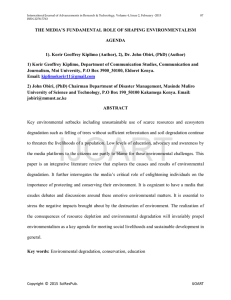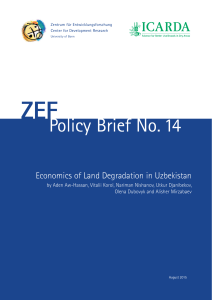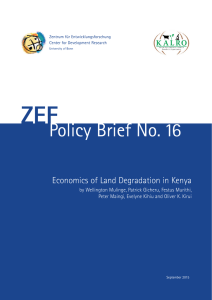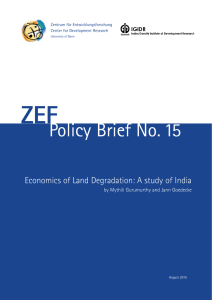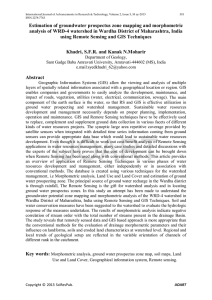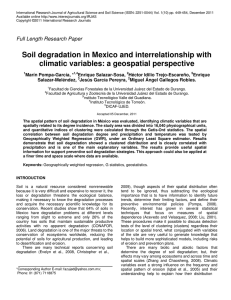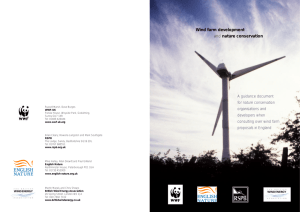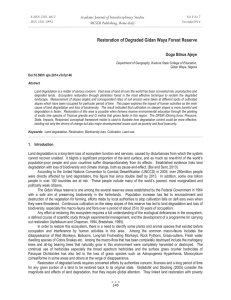This file was created by scanning the printed publication.
advertisement
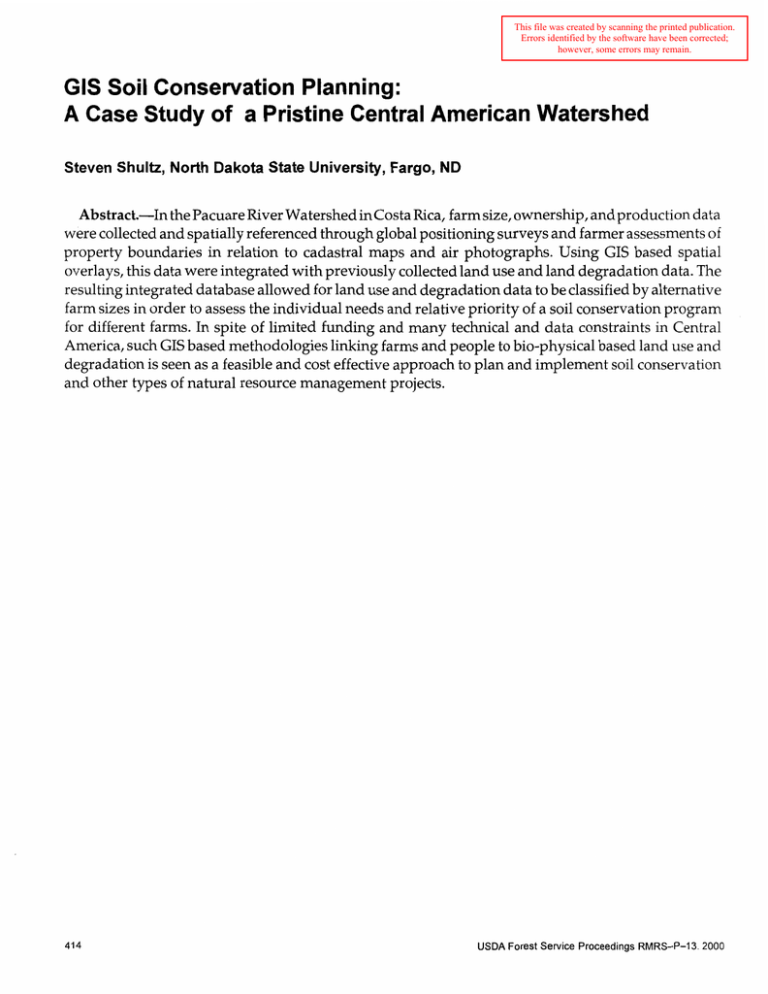
This file was created by scanning the printed publication. Errors identified by the software have been corrected; however, some errors may remain. GIs Soil Conservation Planning: A Case Study of a Pristine Central American Watershed Steven Shultz, North Dakota State University, Fargo, ND Abstract.-In the Pacuare River Watershed incosta Rica, farm size, ownership, and production data were collected and spatially referenced through global positioning surveys and farmer assessments of property boundaries in relation to cadastral maps and air photographs. Using GIs based spatial overlays, this data were integrated with previously collected land use and land degradation data. The resulting integrated database allowed for land use and degradation data to be classified by alternative farm sizes in order to assess the individual needs and relative priority of a soil conservation program for different farms. In spite of limited funding and many technical and data constraints in Central America, such GIs based methodologies linking farms and people to bio-physical based land use and degradation is seen as a feasible and cost effective approach to plan and implement soil conservation and other types of natural resource management projects. USDA Forest Service Proceedings RMRS-P-13. 2000


